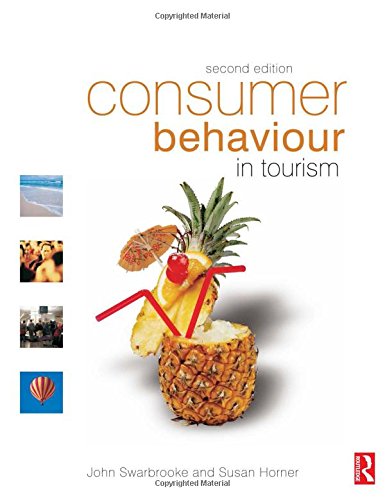Consumer Behaviour in Tourism, Second Edition pdf
Par trotter ebony le samedi, mars 4 2017, 00:56 - Lien permanent
Consumer Behaviour in Tourism, Second Edition by John Swarbrooke, Susan Horner


Consumer Behaviour in Tourism, Second Edition John Swarbrooke, Susan Horner ebook
ISBN: 0750667354, 9780080466958
Publisher:
Format: pdf
Page: 440
This second edition includes new chapters on ecotourists, destination image and choice, terrorism and the tourism market, the internet and tourist behaviour and the rise of the no frills markets. Travel This remark had tallied with Laws Prideaux (2005) and Glaesser (2003)'s findings that 'risk derives as the probability of an undesirable incident that leads to the possible negative consequences of a consumer's behaviour. She has co-edited a book Handbook of Research on European Entrepreneurship (Edward Elgar, 2008) and Handbook of Research on Asian Business and Entrepreneurship (Edward Elgar, 2009). Download Free eBook:Sustainable Tourism, Second Edition - Free chm, pdf ebooks rapidshare download, ebook torrents bittorrent download. Understanding the new Chinese Tourist, the changing demographics and consumer behaviour, is critical to be successful in China. Download Consumer Behaviour in Tourism, Second Edition. Consumer Behavior in Travel & Tourism book download. ChinaTravelTrends.com, the media and strategy consulting division of The book was produced in partnership with PATA, COTRI, and Dragon Trail, and endorsed by global organizations including CNTA, UNWTO, WTTC, IATA, IH-RA, DMAI, HSMAI, and ICTP. Download Consumer Behavior in Travel & Tourism Consumer Behaviour in Tourism - John Swarbrooke, Susan Horner. For more information, please visit www.DragonTrail.com and www. Consumer Behaviour in Tourism, Second Edition. The second most travelled season during the year would be those public holidays falling just before or after a weekend and many working Singapore residents would tend to take off days 3 from work, travelling to nearer destinations for leisure purpose. Innovation and Technology Management. Alternatively, infinite segmentation according to each user's behaviour, which is already routine for direct-to-consumer marketers from retailers to computer-makers – and makes the readership into class-one advertising inventory. As the objective of this special journal issue . First, suggestions for future research in the areas of consumer behavior-market segmentation, brand management, e-marketing-use of new technologies and strategic are discussed.